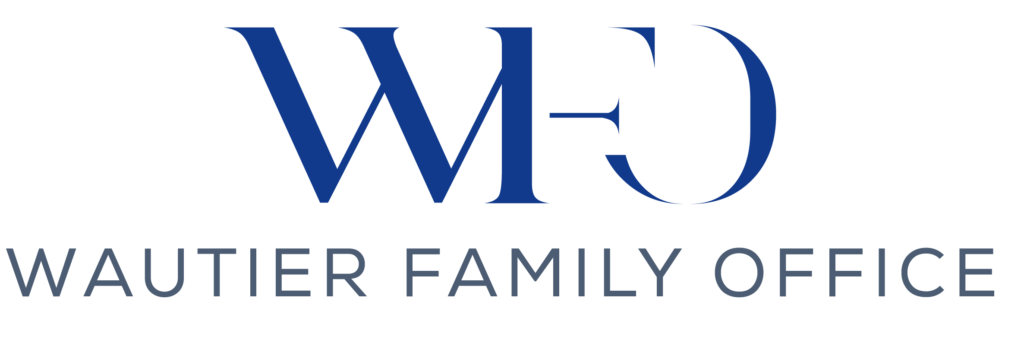What drives true economic prosperity for individuals—tax cuts or increased government spending? How do these two policy tools compare in their ability to foster long-term economic prosperity? Can governments balance short-term stimulus and long-term economic prosperity in a globalized economy?
This blog explores one of the most fundamental debates in fiscal policy: whether tax cuts or increased government spending more effectively promote economic prosperity for individuals. Tax cuts are often praised for their simplicity and immediacy, placing more money directly into the hands of taxpayers and businesses. However, their long-term effectiveness can be mixed, especially if benefits accrue primarily to higher earners or fail to stimulate spending during economic downturns. The discussion considers both the theoretical underpinnings and real-world outcomes, such as those following the U.S. Tax Cuts and Jobs Act.
On the other side of the debate, increased government spending is examined for its direct role in stimulating demand and building economic capacity. By funding infrastructure, public services, and social programs, government outlays can provide stronger support during recessions and create long-term gains in productivity and equity. The post argues that the relative success of either approach in achieving economic prosperity depends on macroeconomic context, execution quality, and political will. Ultimately, the most effective path may lie not in choosing one tool exclusively, but in a strategic balance that promotes broad, sustainable economic prosperity over time.
Put more money in the pockets of taxpayers? Or craft government-administered programs to address desirable societal needs?
When assessed purely with an economic lens, the choice represented by this dichotomy is at the heart of almost every policy difference between the major political parties in the Western world.
That’s because governments are under the most pressure when economic times are tough. When economies slow, governments reach for fiscal tools to spur growth, stabilize employment, and restore confidence. These tools, chiefly tax cuts and increased public spending, sit at the heart of modern economic policy. Yet they remain the subject of intense political and academic debate. At stake is a fundamental question where the answer is still not empirically clear. Namely, how can governments best promote economic prosperity for individuals, particularly during periods of stagnation, recession, or uneven recovery?
This debate is further complicated by the forces of globalization, which have reshaped labor markets, capital flows, and the competitive landscape. As national economies become more interconnected, domestic fiscal policy stakes increase. Decisions made within one country can ripple outward, influencing trade balances, investment patterns, and employment across borders. Policymakers must therefore grapple not only with internal economic dynamics but also with the constraints and opportunities created by a globalized economy.
Fiscal policy refers to the decisions governments make about spending and taxation. Unlike monetary policy, which operates through central banks and interest rates, fiscal policy directly allocates resources and income through public budgets. It is immediate, visible, and politically charged. When governments cut taxes, they aim to leave more money in the hands of consumers and businesses. When they increase spending, they aim to inject demand directly into the economy by funding infrastructure, public services, and transfer payments.
Both approaches are designed to encourage growth but differ in speed, scope, and who benefits most.
On one hand, tax cuts are often praised for their simplicity and their potential to energize private sector dynamism. In contrast, government spending is lauded for its ability to directly address market failures and invest in long-term capacity. Each strategy has trade-offs: tax cuts may lead to deficits or widen inequality, while spending can risk inefficiency or inflation if not properly targeted.
In the following pages, we’ll examine the economic mechanisms behind each policy tool, their historical performance, and their impact on economic prosperity.
Table of Contents:
How Tax Cuts Influence Economic Prosperity
How Increased Government Spending Affects Economic Prosperity
Short-Term vs. Long-Term Impacts
Economic Conditions and Contextual Considerations
How Tax Cuts Influence Economic Prosperity
Tax cuts are among the most frequently used tools in the fiscal policy toolkit. This is for good reason. They are simple to grasp and implement, with the added bonus of being popular among the taxpaying public.
They are often promoted as a way to enhance economic prosperity by empowering individuals and businesses to keep more of their income. The logic is intuitive: with lower tax burdens, consumers have more money to spend or save, and businesses can invest more readily in expansion, hiring, and innovation.
For individuals, tax cuts mean more take-home pay. However, the extent to which this promotes economic prosperity depends heavily on income levels. Middle and lower-income households are more likely to spend additional income quickly on essential goods and services, generating immediate boosts in consumer demand. This spending, in turn, supports job creation and economic activity in local economies.
Tax cuts targeted at higher-income groups tend to result in more savings or investment than direct spending. While this can help deepen capital markets or fuel entrepreneurial ventures, the immediate impact on consumption-driven growth is more muted. Research by the Congressional Budget Office has found that tax cuts for lower-income individuals have a higher fiscal multiplier. In simple terms, this means that for those citizens, every dollar of tax cut results in more economic activity per dollar than a similar cut for wealthier households.
The argument for tax cuts for businesses runs largely along the same lines. Tax cuts for corporations or small businesses are intended to stimulate investment, hiring, and wage growth. In theory, lower corporate tax rates increase after-tax profits, freeing up resources to reinvest in operations, new product development, or workforce expansion. Supporters also argue that competitive tax policies attract foreign investment and reduce incentives for companies to shift profits offshore.
However, the effectiveness of this mechanism depends on context. During downturns or periods of weak demand, businesses may prefer holding cash or rewarding shareholders rather than expanding. For example, after the U.S. Tax Cuts and Jobs Act of 2017, corporate stock buybacks reached record highs. This may be interpreted as a sign that some firms prioritized shareholder returns over job creation, because the marginal dollars allocated were assigned to reducing the share count of the business (and increasing earnings per share as a result) and not to investments in new capacity (jobs or physical assets).
While tax cuts can deliver short-term boosts and improve consumer confidence, they also raise structural concerns. One of these concerns is equity. Broad-based tax cuts often disproportionately benefit higher earners, potentially exacerbating income inequality and limiting gains for the majority. Another is fiscal sustainability. Without offsetting spending cuts or revenue sources, tax cuts can increase budget deficits and constrain future governments’ “firefighting” options in response to economic crises.
While tax cuts are a simple option, the analysis required to choose the right mix is anything but. In the long run, tax policy must balance the goals of promoting economic prosperity with ensuring fair distribution and maintaining the capacity to fund essential public services.
How Increased Government Spending Affects Economic Prosperity
Government spending represents the other central lever of fiscal policy. Tax cuts work indirectly through individual and corporate behavior. In contrast, public spending injects demand directly into the economy. That capital injection is used to finance the building of roads, fund schools, and pay healthcare workers. In recent economic downturns, the idea of simply “cutting out the middleman” and sending cash transfers to households has been experimented with. The underlying theory is that this infusion of money can help replace the contraction of private sector capital when recessions occur.
The higher-touch, more long-term option is to prioritize and build infrastructure projects. These may take the form of new or upgraded highways, public transit networks, or energy grids. These sorts of projects provide immediate employment through construction and supply contracts and lay the groundwork for future productivity.
This kind of spending creates a “multiplier effect”. This refers to the calculus that one dollar of public investment can result in more than a dollar of economic output as the money circulates through the economy and improves the productive capacity of its participants. Studies by the International Monetary Fund and academic institutions consistently find that well-targeted public investment delivers strong returns, particularly during downturns when resources are underutilized.
Another key aspect of government spending is its role in cushioning households from economic shocks. Programs that deliver unemployment benefits and food assistance help maintain service consumption during recessions, preventing deeper downturns and preventing economic “scar tissue” at the household level. These transfers are especially impactful for lower-income families, who tend to spend benefits quickly and locally.
However, despite the benefits, increased government spending is not a panacea for any kind of economic downturn or crisis. Poorly designed programs can result in waste, duplication, or misallocated resources. Political incentives may favor short-term visibility and headline-grabbing measures over programs that are effective over the long term but take time to bear fruit. There’s also the danger of overheating the economy. Suppose spending expands too quickly during a recovery. In that case, it can push up prices and interest rates, crowding out private investment or stoking inflation by raising aggregate demand beyond the economy’s productive capacity. Moreover, rising public debt can become a concern, particularly if growth fails to keep pace with borrowing.
Ultimately, the effectiveness of public spending in promoting economic prosperity depends not only on how much is spent but also on how wisely and equitably it is deployed.
Short-Term vs. Long-Term Impacts
One key distinction between tax cuts and government spending is the timing and durability of their economic effects.
Both can provide needed stimulus in the short term, but their speed and scale of impact often differ. Tax cuts can be implemented relatively quickly, depending on the parliament’s structure. The effects appear in household budgets almost immediately after the date of effect. This rapid infusion of disposable income has the potential to stimulate consumption. However, the actual effect size heavily depends on whether recipients choose to spend or save the additional funds. High-income households receive the highest benefit in dollar terms. But the data shows they are also more likely to save those same benefits, muting the desired effect of increasing money flow through the economy and stimulating growth.
On the other hand, government-led spending requires longer lead times due to planning, procurement, and implementation cycles. However, when well-targeted, it can generate a robust multiplier effect. Studies from the International Monetary Fund (IMF) and the Congressional Budget Office (CBO) have consistently found that direct government outlays, particularly during downturns, can have higher fiscal multipliers than tax reductions. Public investment not only creates jobs and incomes in the short run but also builds productive capacity that fuels economic prosperity over the long term.
Over time, the differences become starker. Tax cuts can erode government revenues, creating future pressures to cut services or raise taxes, which may ultimately counteract their initial benefits. On the other hand, well-managed public spending can improve the structural health of the economy by boosting productivity, reducing inequality, and enabling broader participation in growth.
Economic Conditions and Contextual Considerations
The effectiveness of tax cuts versus government spending also depends heavily on the broader macroeconomic context. During periods of slow growth with high savings rates, tax cuts may not translate into increased consumer spending. These periods typically occur during the cautious period that follows an economic contraction. In this environment, households may choose to pay down debt or save windfalls, especially if they are unsure about the future. In such circumstances, tax cuts may not achieve the hoped-for stimulus effects. They may even concentrate the economic benefits among those least likely to spend them (i.e., wealthier households).
Government spending, on the other hand, has proven to be particularly powerful during recessions, when there is slack in the labor market and underutilized productive capacity. Public investment can fill the demand gap quickly and efficiently, particularly when targeted at job-intensive sectors. The slightly atypical experience of the COVID-19 pandemic illustrated this vividly. Large-scale, broad-based, direct government transfers and large-scale public spending stabilized consumer demand and prevented deeper economic collapse. However, the longer-term effects of sharply higher inflation, as more dollars chased the same amount of goods and services, must also be considered when considering the overall effectiveness of any government spending programs.
Monetary policy also plays a crucial role in determining the effectiveness of fiscal tools. With low interest rates, central banks have less room to stimulate growth through conventional monetary easing. In these “liquidity trap” conditions, fiscal policy becomes more potent. Coordinated efforts between monetary and fiscal authorities can enhance impact, as seen in recent years when stimulus spending was backed by expansive central bank support. However, the calculus becomes more delicate in inflationary environments or when interest rates are rising. Excessive fiscal stimulus can add pressure to inflation and prompt monetary tightening, potentially offsetting gains.
Key Takeaways
There is no one-size-fits-all answer when choosing between tax cuts and increased government spending. Each tool has strengths and limitations, and their impact on economic prosperity depends on how well they are tailored to prevailing conditions and the structure of the economy to which they are applied.
Tax cuts can provide quick relief and encourage private sector activity, especially in regular economic times. However, they tend to be less effective in boosting demand during downturns and may contribute to long-term budgetary imbalances if not carefully designed.
While slower to implement, government spending often provides stronger and more equitable stimulus, especially in recessionary periods. Its success, however, hinges on efficient allocation and the ability to avoid political misdirection.
The real challenge for policymakers is not choosing one tool over the other, but understanding how to balance them within a coherent fiscal strategy that promotes shared growth, supports economic resilience, and invests in the foundations of long-term economic prosperity.




